Chaparral salve – a simple soothing blend of chaparral, olive oil and beeswax, wonderful to support minor cuts, scrapes, burns and dry skin.
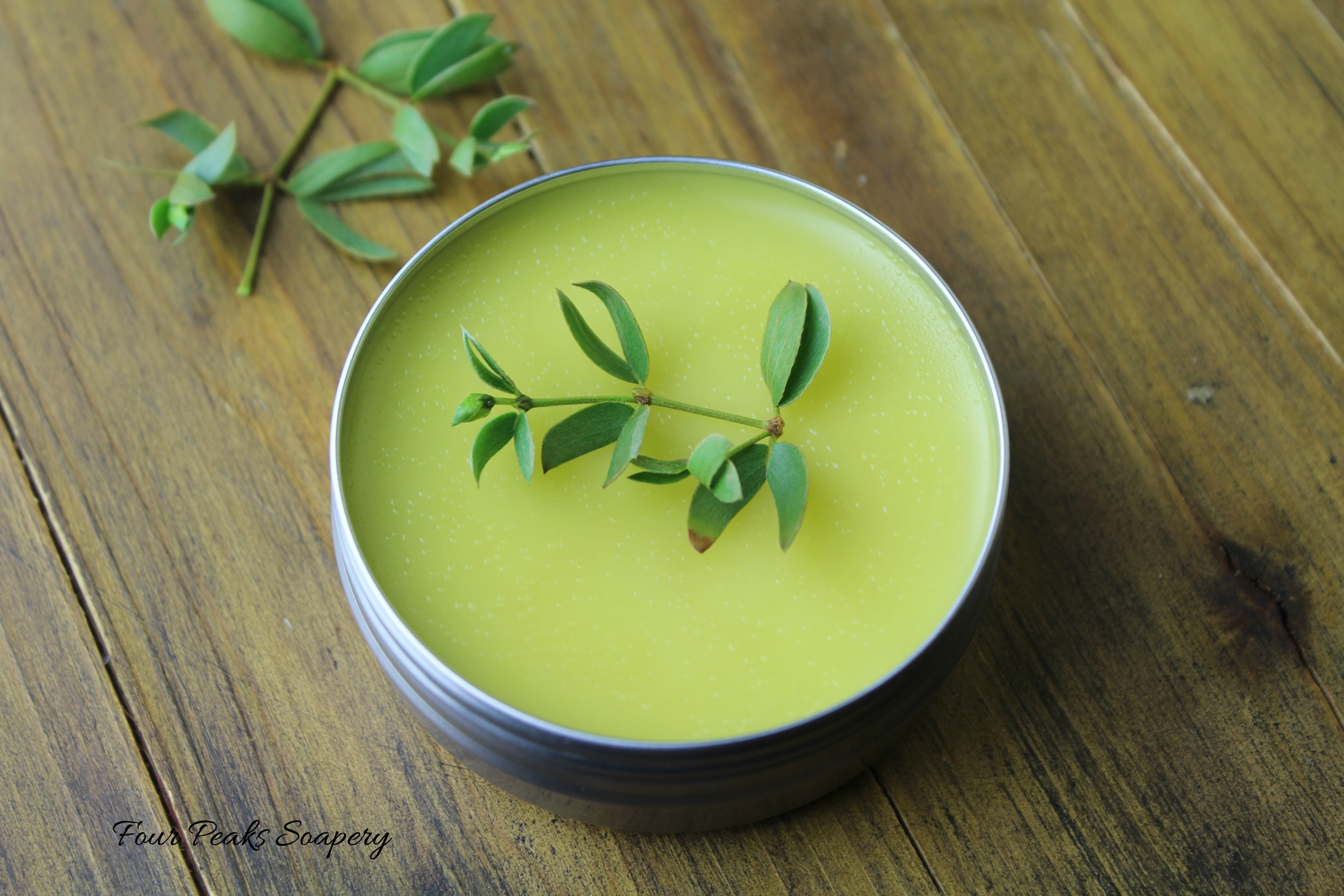
One of my favorite things about the Arizona desert is chaparral. I know, it’s a weird thing to love, but if you have ever lived in the desert or in a desert climate you probably know this plant very well.
And you might not realize you even know what this plant is.
Chaparral is a plant that is popular in the hot, desert climate – Mojave desert, here in Arizona and even in northern Mexico. It can survive in the harshest of conditions – dry, hot, extreme heat. In fact, the plant is actually known to kill its offspring to reduce growing competition.
In other words, it wants space.
And if something (another chaparral plant) is in it’s “space”, it’ll kill that offspring plant just to keep an even spacing between each other.
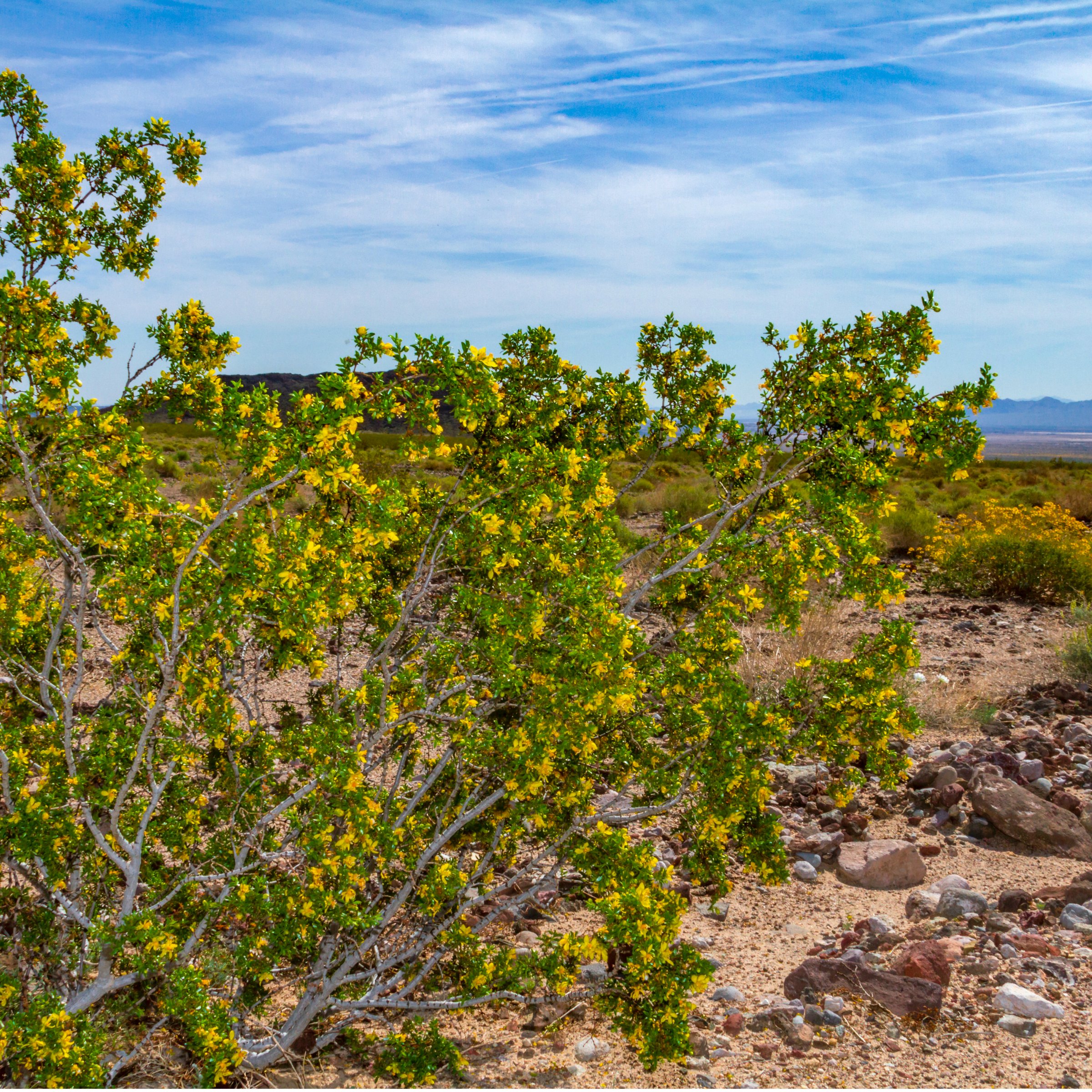
Desert Chaparral (otherwise known as the Creosote Bush)
The chaparral plant is commonly known as the Creosote Bush – or, greasewood plant. For centuries, it has been a traditional healing herb used for a variety of topical applications.
The stems and leaves of the bush are covered with a sticky resin that screens leaves against ultraviolet radiation, reduces water loss, and poisons or repels most herbivores. This resin is used in herbalism and to protect wood from insects.
The plant itself has some incredible properties that make it wonderful to use for skin support, but also for many other areas of the body.
What makes Creosote (or, Desert Chaparral) so amazing?
Chaparral is wonderful for both internal and topical use. When used as a salve and applied to skin, it can help with cuts, scrapes, burns, and even dry skin/eczema.
When used internally, it is to be taken as a tincture in tea – 1 tsp per one quart of water.
- Chaparral is antibacterial, anti-fungal, and anti-inflammatory.
- The plant can promote the healing of minor wounds, scrapes, cuts and skin issues.
- Chaparral salve (creosote) is not only good for topical applications, it’s also a great anti-viral medicine.
- Native Americans have used Chaparral to treat a variety of illnesses, including cancer. Chaparral has an ingredient called NDGA – a potent anti-tumor agent (you can read more here).
As helpful as chaparral can be, when over-used (as a tea) it can create problems with the liver and lead to nausea.
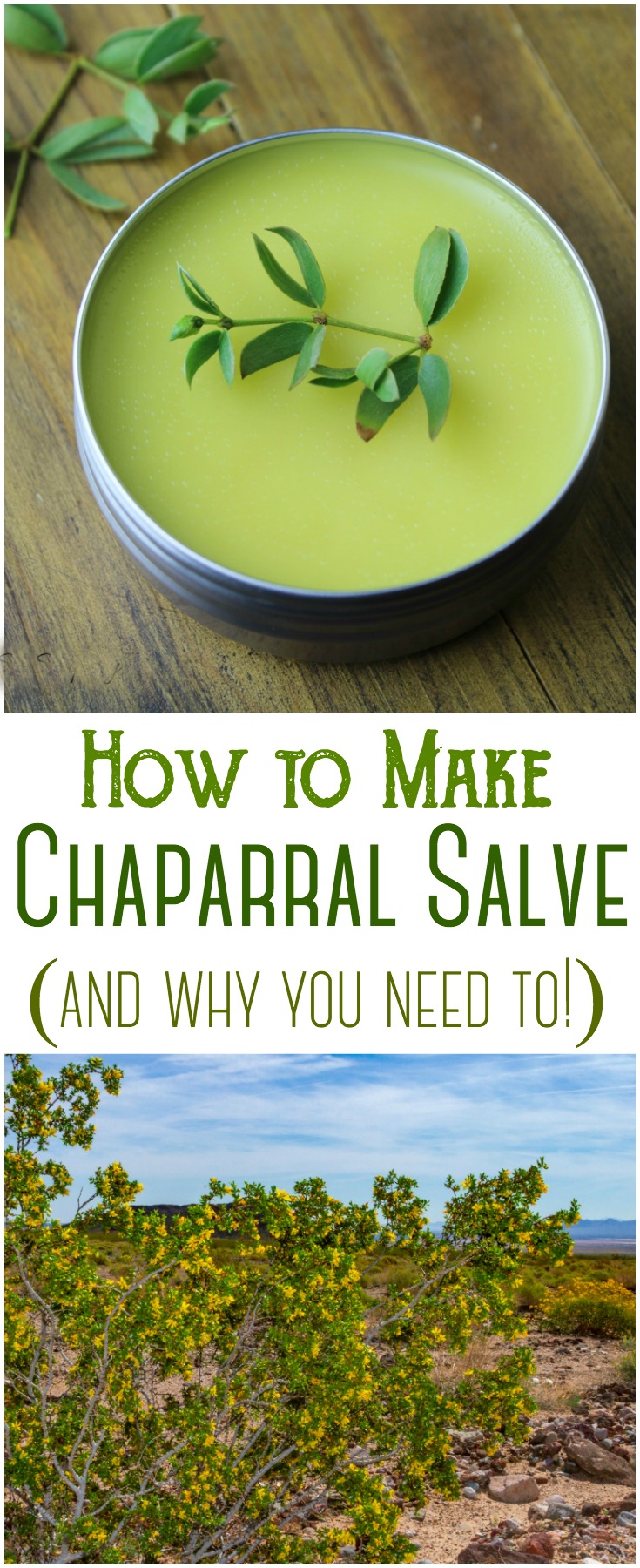
That can also happen with plenty of other things too though. We must always keep in mind that although this is an option for many, it takes away from the profitable pharmaceutical companies so it’s best to do your own research.
Making Chaparral Salve (Creosote)
If you can’t find chaparral in your area, you can also order chaparral online (Mountain Rose Herbs or Amazon both carry it).
Ingredients:
This post may contain affiliate links at no cost to you.
- 1.5 C olive oil
- 1 C. dry creosote leaves
- 1/4 C. beexwax pellets
Make an infusion with the olive oil and dried herb – you can do this any of several ways:
- Add 1 C. of dry creosote to a mason jar and top with 1.5 C. olive oil. Tightly lid, place a brown bag over the top and allow to sit in the sun for 8-12 weeks. Give it a good shake every so often.
- Or, add 1 C. of dry creosote to a mason jar and top with 1.5 C. olive oil. Place in a crock pot and add enough water to come within 2 inches of the top of the jar. Set on warm for 8 hours if not overnight.
- Instead of the crock pot you can place the jar in a small pot on the stove, and add enough water to come within a few inches of the top of the jar. Turn the stove on low for 2-3 hours taking care not to forget about your infusion.
Strain the hot oil through a fine mesh colander or cheesecloth. Add the beeswax and stir until the mixture is completely and thoroughly melted.
Pour that hot liquid into the jars/tins. I love using 2 oz tins, but you can also use glass jars. Allow those jars/tins to sit – do not move them!
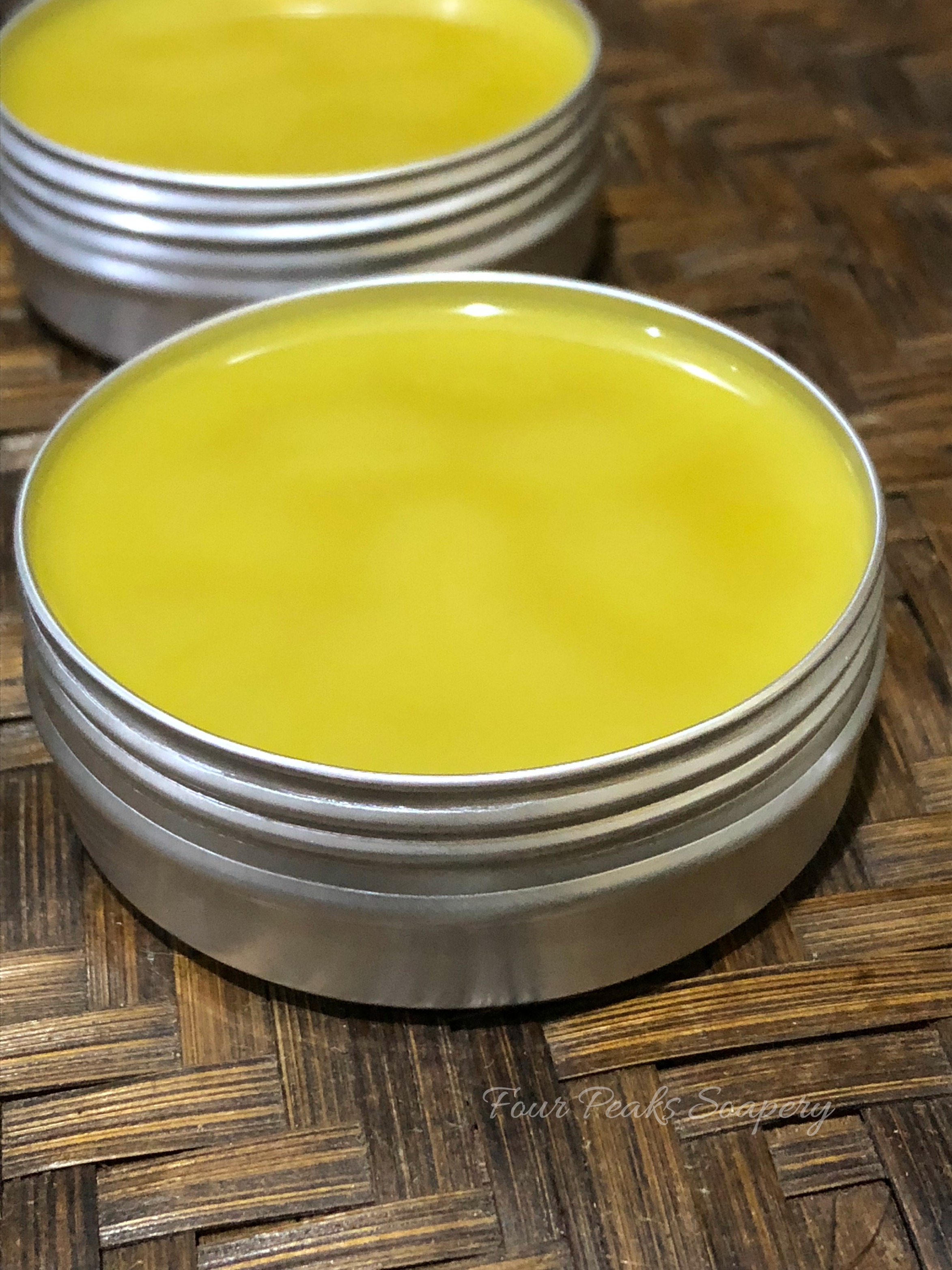
Wait a few hours for the salve to harden up – if you move them, even slightly, during the process, you’ll ruin the perfect tops on your salve.
(If you don’t have cheesecloth, check out some of these other things you can use in place that work just as well).
If you plan on selling your chaparral salve, you’ll want to check out the FDA standards for labeling. The instructions I have directly above do not follow FDA standards, especially if you plan on selling! The FDA requires sellers to adhere to strict standards and you will need to familiarize yourself with those standards.
Enjoy your salve – keep it in a cool place and use topically, as needed.
(Don’t feel like making your own salve? You can find Chaparral (Creosote) Salve in my online shop.


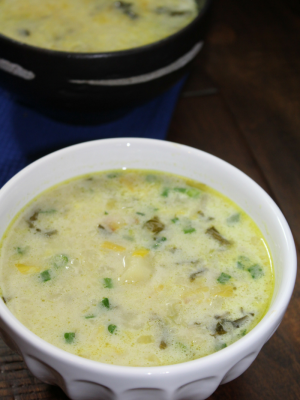
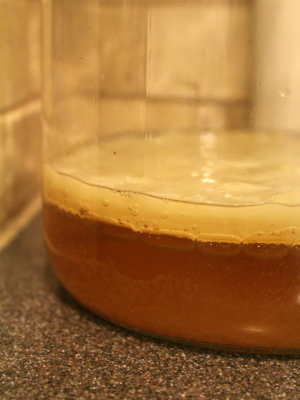
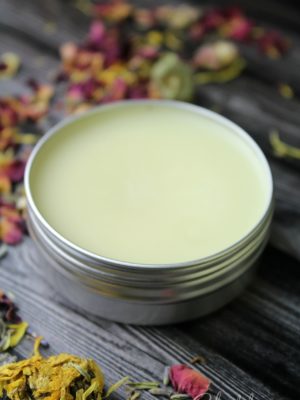
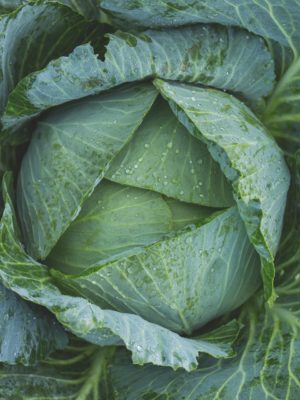

I noticed in the first pic your salve has a sprig if creosote. Is that just for the pic or is this something you actually put in the salve? Thanks for the recipe!
Hi Sandra – I actually put that creosote in the salve. The recipe includes the creosote in the directions 🙂 I hope you enjoy!
Thanks for posting this recipe….Quick question…How much does this Chaparral Salve recipe make in ounces? Thank you so much 🙂
Todd, I am so sorry I’m just now responding. This recipe should make (7-8) 2 oz canisters. (Tins). I prefer tins.
I developed severe eczema a few years ago and have been painstakingly trying to figure out something to help. Medication is too expensive. Since I happen to have a creosote bush in the front yard I had to give this a try. I used a mason jar and put half creosote and half olive oil and let it sit for a month or so in the window sill. I never made a salve from beeswax but I used the creosote infused oil just a few times and it’s already cured my eczema. It’s amazing ! Nothing else worked for me but this is curing it!!!
Amber – that is so amazing to hear! We have creosote here in Arizona — and I have it in my backyard. I make the salve often.. it’s what I have and keep in my bathroom for everything from cuts and scrapes to burns and skin irritations. I love it.. and it smells amazing too. I’m so glad you found something that works for you!
Chaparral salve is the only treatment we use. Cuts, scratches, rashes. We love it.
Same here, we love it as well. Smells incredible. I might not love the heat here in Arizona but I sure love the smell of the desert.
Is it difficult for the medicinal properties of chaparral to be extracted because of it’s resinous quality?
What is the best way to dry creosote myself?
Holly – you can spread it out on dehydrator trays if you are in a hurry to dry it. Otherwise, you have a few choices.
You can tie the creosote in small bundles by the stem and hang upside down in a well ventilated area (away from moisture). Allow up to 2 weeks for the creosote to dry out thoroughly.
Or.. if you don’t want to wait that long, you can spread your creosote out on a baking tray or drying screen and place in a warm spot (out of the way of sunlight). Turn the creosote every 12 hours or so. The creosote should be dry in 2-3 days.
I hope that helps!
Can fresh creosote be used to make salve or must it be dried. My husband used to make a tea for his mother and he used fresh. I love the smell of it when it’s boiling but it tastes horrible.
Cindy, you can use fresh too. I would let the fresh creosote sit out a day or two to allow any moisture to evaporate. Any moisture in the creosote that gets into the oil infusion can shorten the life of the salve. I agree though – smells wonderful but tastes horrible!
Can I used extract instead of infusing dried plants? If so how much should I use? And FYI this works great on arthritic hands too. I bought some as a foot rub and after a few night of applying to my feet at night, I realized that my hands no longer hurt 1st thing in the morning.
Connie, you know I’m not sure. You probably can.. but I haven’t ever tried it so I couldn’t be too certain! I did not know it was great on arthritic hands… that’s super to know!
I made the Chaparral salve today. I put it into 4 – 4oz glass mason jars. It is setting up nicely. I used creosote from our yard here in Arizona. Creosote wet after a rainstorm is my favorite aroma. To speed up the process I put the olive oil and creosote solution into my 3 qt crockpot overnight. I did not put a lid on the jar but did put the lid for the crockpot on. There was condensation on the lid, so after separating the oil from the creosote I put it in a stainless steel pan and let it heat up for a while to evaporate any water in the solution. So did I do that correctly with the crock pot? My house smells great.
That’s great! I have used the crock pot too.. though I usually put a lid on the jars and then put in the crock (because of the condensation). If I have a lot of creosote (and I usually do) to make the house smell good I’ll put the creosote in the crock pot with water and keep the lid off. It’s one of my favorite smells!!!
Do you always dry the creosote leaves/flowers before infusion with oil? Or can I use them fresh when used in a crockpot and steeped overnight?
I prefer to dry them because it rids the leaves of moisture. You can infuse fresh but the leaves will have some amount of moisture in them, so when you infuse in oil, it will infuse but the finished product won’t last quite as long. (It might get more rancid quickly). Hope that helps!
Hello, I am gathering the supplies to make this! Is there a specific kind or grade of olive oil you should use for a body cream like this? Thanks!
Hi Jen, I would pick up a really high quality extra virgin olive oil. I hope that helps!
Thank you for sharing the recipe! Do you wash the creosote leaf before use? Would washing cause the resin to be washed out?
Some books said to do “alcohol intermediary” on the herb before herbal infusion and I am wondering if this applies to creosote?
I don’t wash the creosote, because I don’t want any moisture to affect the salve. Too much moisture can affect the infusion and yes, it will wash some of the resin. I have never done an alcohol intermediary on creosote.
Question…is it alright to infuse the creosote with jojoba oil…and just use that (without the beeswax) as a facial topical……..? Have made your salve with olive oil and it is great.!..but I’m concerned about putting the beeswax mix on my face every day..I’d appreciate your input…thankyou.
Hi Merle, you actually can. In fact.. I do that, personally – I infuse creosote in unrefined grapeseed oil and I strain it thoroughly and put in glass vials (1 oz). I sell them in my Etsy shop and they are quite popular for people who want topical application without the beeswax. So the answer is yes! You can use jojoba, organ oil, any oil quite honestly – jojoba is great for skin so that would be wonderful on your face.
Thankyou so much for getting back to
me! Mught you also have any recipes for
soap or lotions, also using Creosote ? How about candles too ?
I’m seeing some of your food-ie recipes
which I’m anxious to try as well…yum !
I do! I have Creosote Soap, and Creosote Lip Balm that I make but I haven’t put them on this blog. As far as soap – what I do is I use my standard “soap” recipe (cold process), and instead of olive oil, I use creosote-infused olive oil. Then I add 2-3 Tsp of Creosote in the batter (50 oz, enough for one loaf of 8 bars).
Same with the lip balm. My standard lip balm recipe, except I use creosote-infused grapeseed oil with tallow, and beeswax and pour into tubes.
I have standard Cold Process Soap recipes on this blog as well as basic lip balm recipes, you can use:
https://www.rebootedmom.com/herbal-lip-balm/
https://www.rebootedmom.com/handmade-carrot-soap/
(just swap out the olive oil for creosote-infused olive oil) and add the creosote powder before pouring into the mold.
I’m always here to help, feel free to let me know if you have any questions. I love creating things!
Hi thanks for all the info! Does this salve kill basal cell skin cancer, and how would i use it? and do you ship to Canaa? Thank you!
Hi Del – I can’t honestly say it does or doesn’t because I don’t have enough knowledge there. But.. there is a really good article on the subject for your reading pleasure (if you like doing that type of research):
https://www.ncbi.nlm.nih.gov/pmc/articles/PMC4488564/
I do make this salve in my etsy shop (https://www.etsy.com/shop/FourPeaksSoapery) — I usually don’t ship to Canada but I have on several occasions as special requests. Should you want to try the salve, just message me on my Etsy shop and I can find out the cost for shipping to you where you are. 🙂
Hi- We recently moved to Phoenix and have fallen in love with creosote! I made this salve and love it!
I’m wondering if I can use this same technique using other dried herbs such as Chrysanthemum or rosemary, lavender etc. Thoughts? Thanks!
Hi Molly! You definitely can – I do the same with Comfrey (I grow my own and dry it), Pinon Pine sap, and Lavender. You want to try to use dry herbs as fresh can introduce moisture to the oil and it will go rancid more quickly. If you use dry lavender, and infuse in oil, the oil will take on the scent of the lavender – the longer it infuses, the stronger the scent.
Which do you think would make a better or stronger salve? The infusion for 8-12 weeks or heating the mixture overnight? I would like to make some of this, also would walnut oil work for this. It gets rancide less quickly.
Frank, I have done quicker infusions — if I want them quickly, then I place creosote in the crock pot (I have a $1 crock pot I got at Goodwill specifically for salves).
I then cover with oil and place on low heat. You have to be really careful doing infusions this way because the creosote can burn if you leave it too long. But I usually place on the lowest heat setting for 4-5 hours. Then strain out the oil. I don’t know much about Walnut Oil though – You can use avocado oil, sunflower seed oil, sweet almond, even olive oil. I haven’t used Walnut so I don’t know much about that.